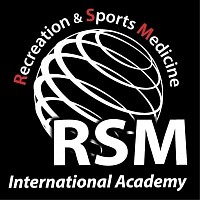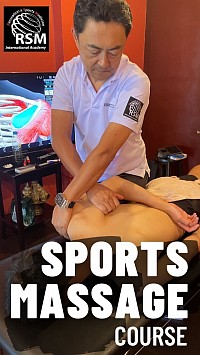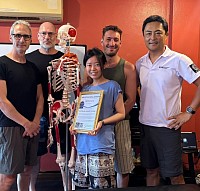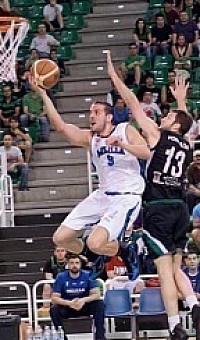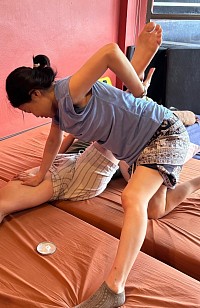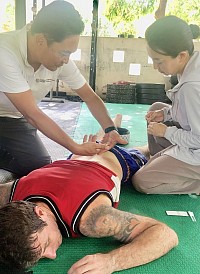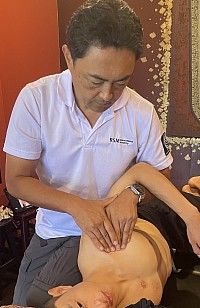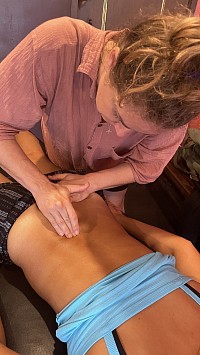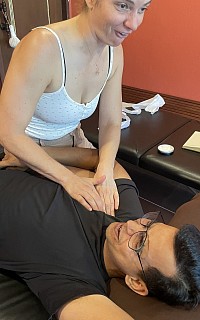Sports Massage Course
Sports Massage for Performance, Pain Relief, and Injury Prevention
After completing the Trigger Point Therapy Course, participants can join the Sports Massage Course from 3:30 PM to 5:00 PM. Focused on sports performance enhancement, especially running, it combines pain relief and injury prevention. The course addresses injuries from repetitive motion and muscle tension, improving range of motion and movement quality. By combining sports massage and PNF techniques, it enhances proprioceptor activation and boosts performance.
🔸 This course provides students with a 90-minute practical sports massage skill set, equipping them with the essential tools for daily athlete management and enhancing athletic performance.
Course Schedule & Fee
This course equips you with essential skills for sports conditioning management, focusing on sports performance enhancement, pain reduction, and sports injury prevention.
🔸 Duration: Monday to Friday, 15:30 - 17:00 (immediately after the Trigger Point Therapy Course)
Total: 7.5 hours (1.5 hours per day)
Course Fee : 15,000 THB
(Trigger Point Therapy + Sports Massage)
🔸 RSM’s Sports Massage Training is a specialized program designed for professionals in sports-related fields.
Elite Athletes Turn to RSM Massage School for Top-tier Conditioning Management
Spanish pro basketball player, Salva Arco Frías, seeking massage from professionals well-versed in sports medicine and functional anatomy, visited RSM through a hotel recommendation during his 10-days off-season.
He received daily massages targeting different areas, preparing for the upcoming season.
🔸 RSM isn't just a school teaching massage and anatomy, we offer practical massage techniques chosen by European pro athletes.
Stand Out with RSM’s Unique Sports Massage Techniques for Pain Management and Performance
This course enhances sports performance by improving range of motion and injury prevention. Through PNF techniques and proprioceptive activation, you can learn to prevent compensatory movement patterns and biomechanical imbalances caused by pain and restricted motion.
🔸 You will master techniques to optimize movement efficiency and maintain functional athletic form, ensuring sustained peak performance while minimizing the impact of pain-induced changes on movement mechanics.
Optimizing Your Sports Massage with Kinetic Chain Understanding
By understanding foot pronation, supination, and their effect on the ascending and descending kinetic chains, you will learn to apply Trigger Point Therapy effectively. This knowledge optimizes sports performance, reduces injury risk, and addresses muscle imbalances. Hands-on training will help you enhance mobility, maintain top performance, and manage pain.
🔸 Additionally, you will incorporate Deep Tissue Massage and Myofascial Release techniques to further enhance the effectiveness of Trigger Point Therapy, ensuring long-term injury prevention and sustaining optimal athletic performance.
Understanding Sports Injury Causes: Accelerate Your Sports Massage Skill Set
By understanding the typical pain patterns and causes of sports injuries, such as shin splints, plantar fasciitis, knee pain, hip joint pain, and sports lower back pain, you will be equipped to provide more effective sports massage. The course also covers critical concepts like pelvic stabilization, rotator cuff imbalances, and the effects of foot pronation and supination on the kinetic chain.
🔸 This training will enable you to apply these techniques with precision, offering a 90-minute sports massage skill set that improves injury management, enhances performance, and prevents pain for your clients.
Trigger Point Therapy for Performance Enhancement
Latent trigger points can become active from repetitive sports activity, leading to reduced performance and increased risk of injury. These trigger points disrupt the kinetic chain, resulting in muscle imbalances and negatively impacting athletic performance.
🔸 In this course, participants will learn to identify and deactivate trigger points while maintaining proper kinetic chain and dynamic postural alignment. This approach alleviates pain, enhances muscle flexibility and strength, and helps athletes optimize performance and prevent future injuries.
Sports Biomechanics & Joint Mobilization for Alignment
An understanding of sports biomechanics and joint alignment is essential for effective sports massage. This section highlights how joint function impacts performance, focusing on HVLA and LVLA mobilization techniques. These techniques restore joint function, improve stability, and reduce injury risks. Joint play, the slight looseness necessary for proper joint function, is incorporated to ensure optimal movement.
🔸 In this course, you will learn to assess joint function, apply HVLA and LVLA techniques, and enhance mobility. You will gain the skills to reduce injury risk and optimize performance through biomechanical insights and joint play.
